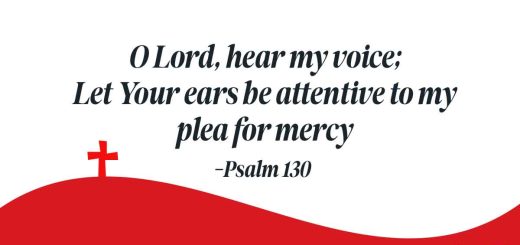Striking the right note in Holy Week
Parishes are now preparing for the Holy Week celebrations. In the first of two articles, Fr MALCOLM McLAREN advises how parishes can best structure the music for the Easter Triduum.

A priest holds a crucifix during veneration on Good Friday. (Photo: Michael McArdle, Northwest Indiana Catholic). In his article, Fr Malcolm Mclaren outlines the liturgy to be used for the Easter Triduum.
I previously wrote two series of articles in The Southern Cross outlining some key liturgical principles which concern the use of music during the Mass.
People have since responded with specific questions concerning instruments, choirs, celebrations outside of the Mass, and liturgical seasons.
These are valid questions which begin to build on the initial principles. They show that there is both a keenness to understand and a desire to celebrate the liturgy well: not simply as a ritual action, but in a way that enables an encounter with God.
At present I am investigating the most beneficial way of facilitating further questions on liturgical music, in collaboration with the liturgy office of the Southern African Catholic Bishops’ Conference.
This article addresses a group of questions that enquired about music during the Easter Triduum. Since here I can only refer to some of the more important aspects which are unique to the Easter Triduum, it ought to be read together with my previous articles which concerned the Mass more generally,
and the Roman Missal (www.scross.co.za/2012/07/music-in-the-mass-1/).
To begin, the Triduum is not three separate celebrations: it is one great celebration which takes place over three days.
It begins with the Evening Mass of the Lord’s Supper (Holy Thursday), includes the Celebration of the Lord’s Passion (Good Friday), reaches its climax in the Easter Vigil (Holy Saturday), and ends with the celebration of Evening Prayer on Easter Sunday.
Celebrated well, these three days can be a most profound spiritual experience a participation in the Paschal Mystery and the Roman Missal itself points out the special role which music has during this time.
This article is written in anticipation of upcoming meetings of parish liturgy commissions to plan for Holy Week and the Easter Triduum. If you have not already met, avoid meeting only days before the Triduum (or Holy Week). Instead, try to meet as soon as possible since there are many aspects of this special liturgy, the greatest and most solemn of our Church, that deserve attention.
Moreover, instead of rushing to assign readers, altar servers and extraordinary ministers of Holy Communion, a meeting where the commission also read together at least parts of the Roman Missal that concern the Triduum, could be much more productive and useful.
Music is, of course, only one aspect of the work of the parish liturgy commission. But musical planning, likewise, is about much more than simply choosing hymns and putting together a makeshift choir: it is firstly about understanding the celebration on each of the three days, and then seeing how music (in all of its forms) might help during the celebrations. It involves working with the priest and the deacon.
Moreover, as this is also a time when there is only one celebration each day for the entire parish (with the exception of Easter Sunday), I would encourage parish choirs to unite, rather than divide up the celebration of the Easter Triduum.
The Triduum might also be the chance to invite those who feel unable to make a weekly commitment to join the choir, perhaps as part of their Lenten commitment!
Although a diversion from music, I would like to highlight four liturgical issues that the parish liturgical commission might consider in preparation for the Triduum.
1. After the distribution of Communion on Holy Thursday, the Blessed Sacrament is transferred to a place of repose not to the altar of repose. This incorrect terminology perhaps arose because the place of repose was one of the (old) side altars in the church. There is nothing incorrect in continuing to use a side-altar.
However, it is the central altar on which the Eucharist will be celebrated which remains a focal-point in the Church, and which later will be stripped bare. An attempt to create a place of repose that outdoes the main altar in terms of flowers, candles and cloths is more than simply distracting.
2. There is no entrance procession at the liturgy on Good Friday, nor is there mention of concelebrants. It is the priest and deacon alone who go to the altar. Such an approach should be simple and not resemble the entrance procession of the Sunday Mass.
Altar servers for this day, other clergy, as well as those who might help in the distribution of Communion, should already be seated before the liturgy begins and may even be seated outside the sanctuary.
3. There is only one cross to be used for the adoration (previously called veneration) of the Cross on Good Friday, and it is a cross that is adored, not a crucifix. Notice that only one of the options includes unveiling the cross (not both). Under no circumstances should there be more than one cross for adoration!
In the presence of a large number of people, the Roman Missal outlines a proposal in which adoration of the cross may take place. We adore the cross, since this is the object on which Jesus was glorified by God. Indeed, the Passion Narrative that is read on this day shows how the cross may be considered Jesus’ throne.
Moreover, this liturgy is a celebration of the passion of the Lord who is already risen, which is why we use red vestments during the celebration (and not black or purple). If you do not have a cross, invest in one. They can easily be made without great cost to the parish.
Finally, the missal indicates that the priest removes his shoes (and chasuble) before he adores the cross.
4. The use of light (and darkness) during the Easter Vigil is cause for much debate, some yearning for a dramatic lighting of the church at the Gloria. And yet the Roman Missal is clear: at the start of the celebration the church is in darkness, and the lights of the church are then turned on immediately before the Exultet is sung, and once the entire congregation is in the church.
Evening Mass of the Lord’s Supper (Holy Thursday)
The evening Mass of Holy Thursday is traditionally associated with the Last Supper. However, take care to notice the words of the Entrance Antiphon which marks the end of Lent and the start of the Easter Triduum: we are beginning a three-day celebration of the triumph of the cross: We should glory in the cross of our Lord Jesus Christ, in whom is our salvation, life and resurrection, through whom we are saved and delivered.
The entrance procession at this evening Mass will be more elaborate for most parishes than a normal Sunday Mass: it may take place from the back of the church rather than from the sacristy, it may involve more altar servers (with the processional cross, candles and those with the thurible and incense), and may also include concelebrating priests. Therefore a suitable entrance hymn, in line with the theme just mentioned above, should be chosen to accompany both this procession and also the incensing of the altar.
The Gloria frames the beginning of the Triduum (on Holy Thursday evening) and the end of our period of waiting at the Easter Vigil. The ringing of the church bells usually accompanies the Gloria on these two occasions, although care should be taken not to overpower the Gloria with the church bells.
Moreover, a Gloria on Holy Thursday evening that is more elaborate than the Gloria at the Easter Vigil would be inappropriate. Remember that it is the Easter Vigil which is the highpoint of the Triduum.
It is also important to comment on the use of musical accompaniment after the Gloria has been sung on Holy Thursday. Until the intonation of the Gloria again at the Easter Vigil, care should be taken to change the nature of the accompaniment so that it serves only to sustain the singing, mostly in tone.
While some parishes and communities will not have any musical accompaniment during this period, using only their voices, the missal makes allowance for accompaniment to continue, but its level must change. Therefore the organist should use softer stops on the organ, or pianist a lower volume on the keyboard or piano: the accompaniment should be distinctly subdued and simple.
Throughout the Triduum, the Roman Missal provides suggestions of texts that should be sung to accompany various actions including, for example, the Washing of the Feet. Try to use some of the common hymns which have been composed from these given texts.
However, remember that the Washing of the Feet is not just an action for the priest, but for the whole community. The significance of this great act of charity should not be missed by those whose heads are buried in the pages of a hymnbook.
Therefore, rather than searching for extra hymns to fill every moment with sound, it might also be useful to combine periods of silence together with song, to give the community space to reflect on the meaning of what they observe. (Incidentally, it is both feet of those chosen that should be washed, not just one).
The missal also proposes Ubi Caritas to be sung during the Preparation of the Gifts (and Offertory Procession). This is the only celebration in which an offertory text is given in the entire Roman Missal, and it should not be replaced with an alternative hymn, without at least trying to learn it first.
In fact, if the choir were to learn one new piece for Holy Thursday, this would be it. The melody is repeated in the verses, the response is easy for the congregation to follow, it does not need to be accompanied, and there are versions available online which can assist in the learning.
Interestingly, it is one of the chants chosen by the Church in its collection Jubilate Deo: a selection of Latin chants that would be kept in use following the reforms of the Second Vatican Council, and which could be used during large celebrations.
Although a popular Taize version also exists, the problem is its lack of verses. On Holy Thursday the offertory hymn or chant needs to support a long action: the procession might include gifts being brought up for the poor (including the Lent mite boxes) and there is the incensing of the gifts, altar, cross, celebrants and the community. Using the longer chant, the verses could be repeated if needed, or it could be followed by some repetitions of the Taize version!
Finally, a post-Communion hymn may be useful on this day to allow the priest and the servers to prepare for the second distinct moment of this liturgy: the transfer of the Blessed Sacrament to the place of repose.
Part 2 “What to sing on Good Friday and the Easter vigil” next week.
- When was Jesus born? An investigation - December 13, 2022
- Bishop: Nigeria worse off now - June 22, 2022
- St Mary of the Angels Parish puts Laudato Si’ into Action - June 17, 2022




